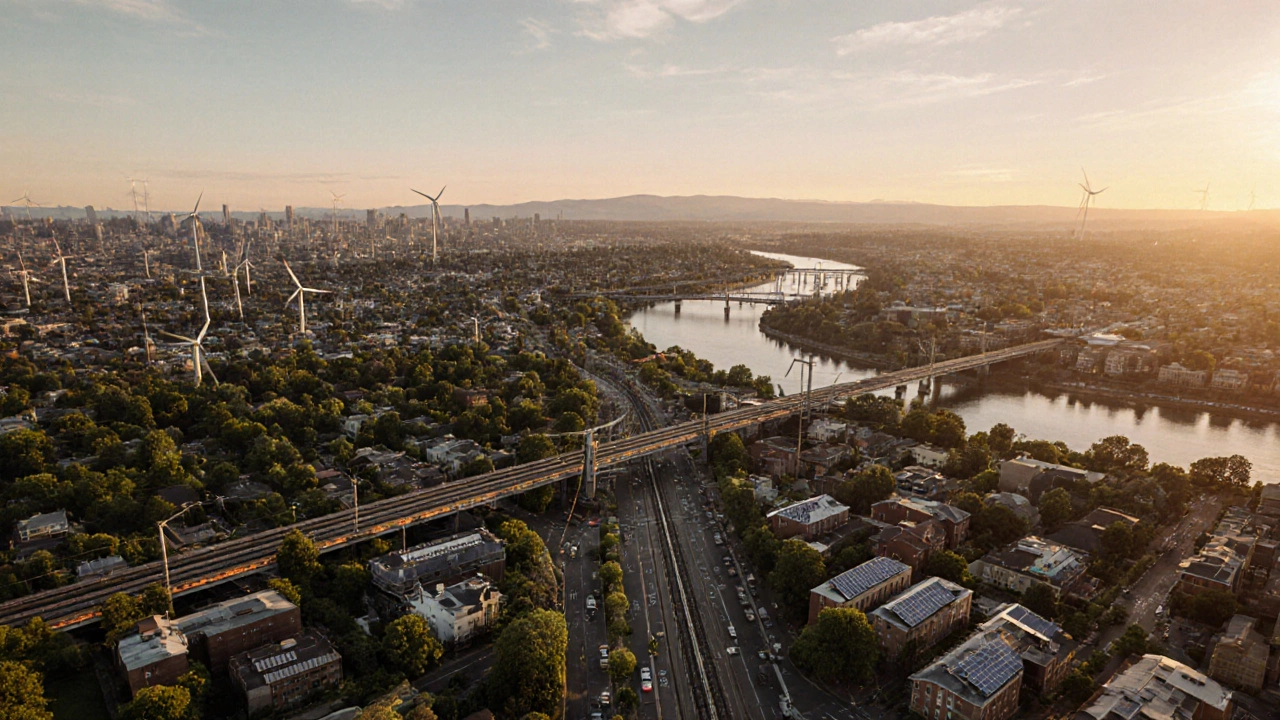Sustainable US City
When talking about sustainable US city, a city that balances environmental health, social equity, and economic vitality in the United States. Also known as eco‑friendly city, it strives to lower carbon footprints while improving residents' quality of life. In practice that means cleaner streets, energy‑efficient buildings, and public spaces that support walking and biking. Below we’ll see how concepts like green building, construction that uses low‑impact materials, efficient design, and renewable resources and eco‑friendly house, a home built to save energy and water while using sustainable materials fit into the bigger picture.
Why sustainability matters in US cities
A sustainable US city encompasses green building, renewable energy, and smart urban planning. Green building requires renewable energy to reach its full potential, because using solar panels or wind turbines cuts the electricity needed from fossil fuels. Eco‑friendly houses contribute to lower carbon emissions by reducing heating and cooling loads, which in turn supports city‑wide climate goals. The greenest US state, the state that leads the nation in renewable energy usage, low emissions, and sustainable policies provides a useful benchmark – cities in that state often adopt the same standards that make the whole region greener.
Urban planners in a sustainable US city look at transit, waste management, and water use as pieces of the same puzzle. When a city installs a bike‑share program, it reduces car trips, which lowers traffic‑related pollution. Effective recycling programs keep materials out of landfills, cutting the demand for new raw resources. Together, these actions form a feedback loop: better infrastructure supports greener lifestyles, and greener lifestyles justify more investment in infrastructure.
Financial incentives also play a big role. Federal tax credits for solar installation, state grants for energy‑efficient retrofits, and local rebates for low‑flow fixtures all help homeowners and developers offset upfront costs. By pairing these incentives with renewable energy, power generated from solar, wind, hydro, or geothermal sources projects, a sustainable US city can move toward net‑zero emissions faster than a city that relies solely on traditional energy sources.
Community engagement is another critical piece. When residents participate in neighborhood tree‑planting events or local sustainability workshops, they become advocates for green policies. This grassroots pressure often pushes city councils to adopt stricter building codes, expand green spaces, and invest in public transit. In turn, those policies create a healthier environment that attracts more residents, businesses, and tourists who value sustainability.
All of these topics—green building, eco‑friendly houses, renewable energy, and community action—show up across the articles below. Whether you’re curious about the cheapest eco‑friendly house designs, want to compare the greenest US state rankings, or need tips for planning a low‑impact vacation, the collection offers practical insights you can use right away.
Ready to dive deeper? Scroll down to discover detailed guides, cost breakdowns, and real‑world examples that illustrate how a sustainable US city can be built, lived in, and enjoyed today.
Which U.S. City Leads in Eco-Friendliness?
Discover which American city tops the eco‑friendly ranking, why Portland, Oregon leads, and how to experience sustainable travel across the U.S.
- Oct, 24 2025
- 0 Comments
